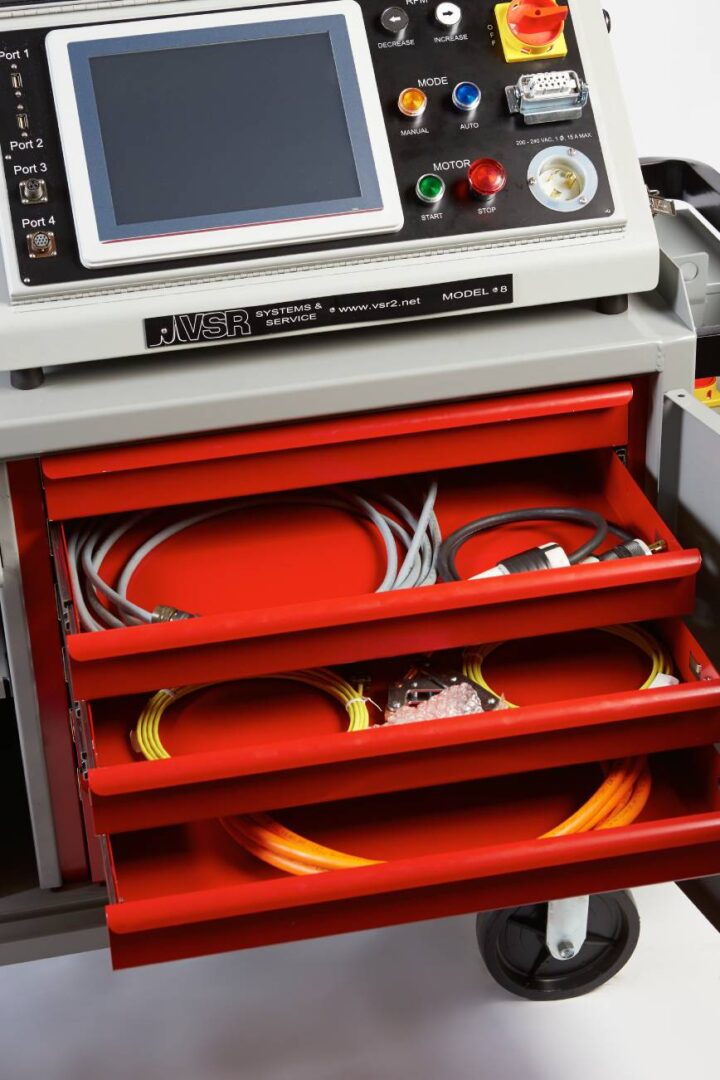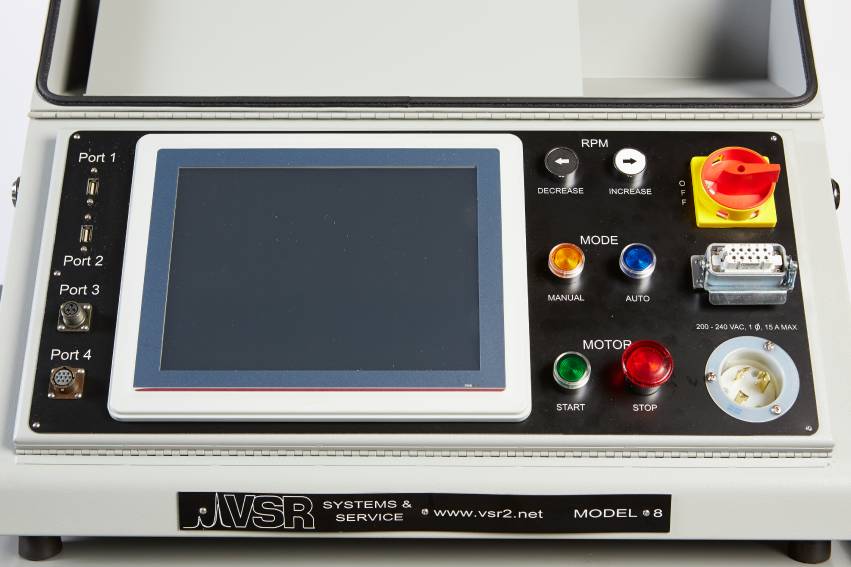Vibratory Stress-Relieving Solutions and Technical Resources
Vibratory Stress Relief System – VSR 8 System
- The VSR-8 System can be used on a wide variety of workpieces, due to the wide unbalance and speed range of the BL8 Vibrator. This system has become the standard of the industry in numerous industries, including:
-
- Machine tools
- Power generation components (esp. hydro-power)
- Papermill machinery components
The System uses the latest VSR OS and displays the key stress relief operating parameters of work-piece acceleration, vibrator speed, and vibrator power. Full electronic motor protection, including a virtual thermometer display of the motor winding temperature, is standard.

Resources
VSR Apps and Limits
The VSR process can be used to stress relieve a wide variety of metals and component configurations:
Materials
Configurations
Limitations
VSR Technical Library
Introduction
This library contains today’s most comprehensive collection of work in the field of vibratory stress relief. Although not all work in this field is included, the most fundamental, groundbreaking work can be found here. We also invite submissions of works, either sourced from elsewhere or directly from authors. Some of the library entries are indeed direct author submissions.

Criteria for Library Acceptance
Papers for inclusion in the library should meet the following set of criteria:
- The paper should bring to light new detail, whether purely technical or application-based, in the field of stress-relieving, esp. in the area of vibratory stress relief.
- Details of the methods and apparatus, both that used to perform the stress relief, and also measure its effectiveness, should be described at length so that reproduction of the work is feasible.
- The submission that is chiefly commercial in nature will be returned, with a request to improve the scientific and technical content, while removing the commercial aspects.
VSR Reports
VSR Reports describe subcontract work or work done by VSR Equipment Users, which include descriptions of the stress relief setup, vibration data, and treatment charts, and (if available) the final outcome of the stress relief, such as machining results.
These have been written with the intent of being able to reproduce the work on similar components, and thus they not only help those wanting to learn more about the VSR Process in general but also are a good training and reference tool, for VSR Equipment Operators.
Reports
VSR Report - Colonna Shipyard / Steel America - Stress Relief of four Storm-Surge Flood Gates for the City of New Orleans
VSR Report - Three-D Metal Works - Andrews, SC Clam Shell Fabrication Project
References
- R. Dawson & D. G. Moffat, Vibratory Stress Relief: A Fundamental Study of Its Effectiveness. J. of Engineering Materials and Technology, Vol. 102, April 1980, pgs. 169 – 176
- Pioneering work, stress relieved 90% of stress using servo-controlled resonant vibration. Range of materials, including various steels and an aluminum alloy.
- William Hahn, Vibratory Stress Relief and Modifications in Metals to Conserve Resources and Prevent Pollution. Alfred University, Center of Environmental and Energy Research ( CEER ), December 2002
- Resonant vibration was found to be several times more effective in this work than used ( FEA ) Finite Element Analysis to compare the effectiveness of resonant vs. sub-resonant vibration.
- Y. P. Yang, G. Jung, and R. Yancey, Finite Element Modeling of vibration Stress Relief after Welding. Presented at Trends in Welding Research Conference, ASM 2005
- FEA is used to evaluate the effectiveness of vibration in relieving stress. Both resonant and sub-resonant vibration is discussed. Effectiveness is found to be proportional to vibration amplitude, more achievable using resonant methods.
